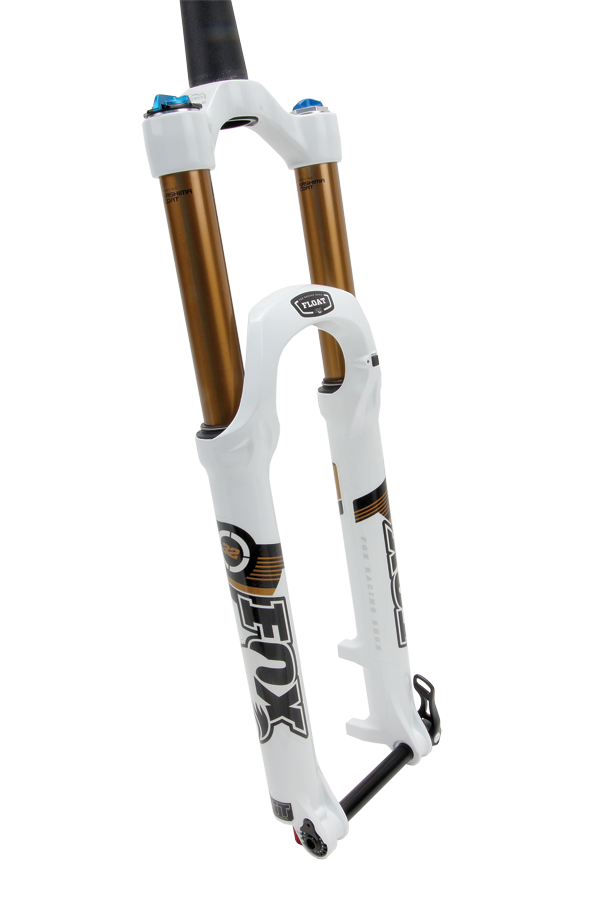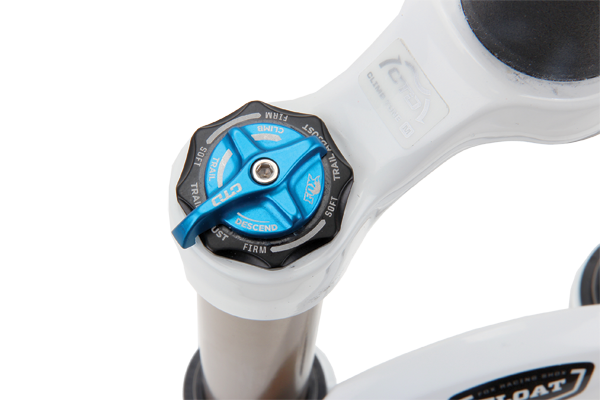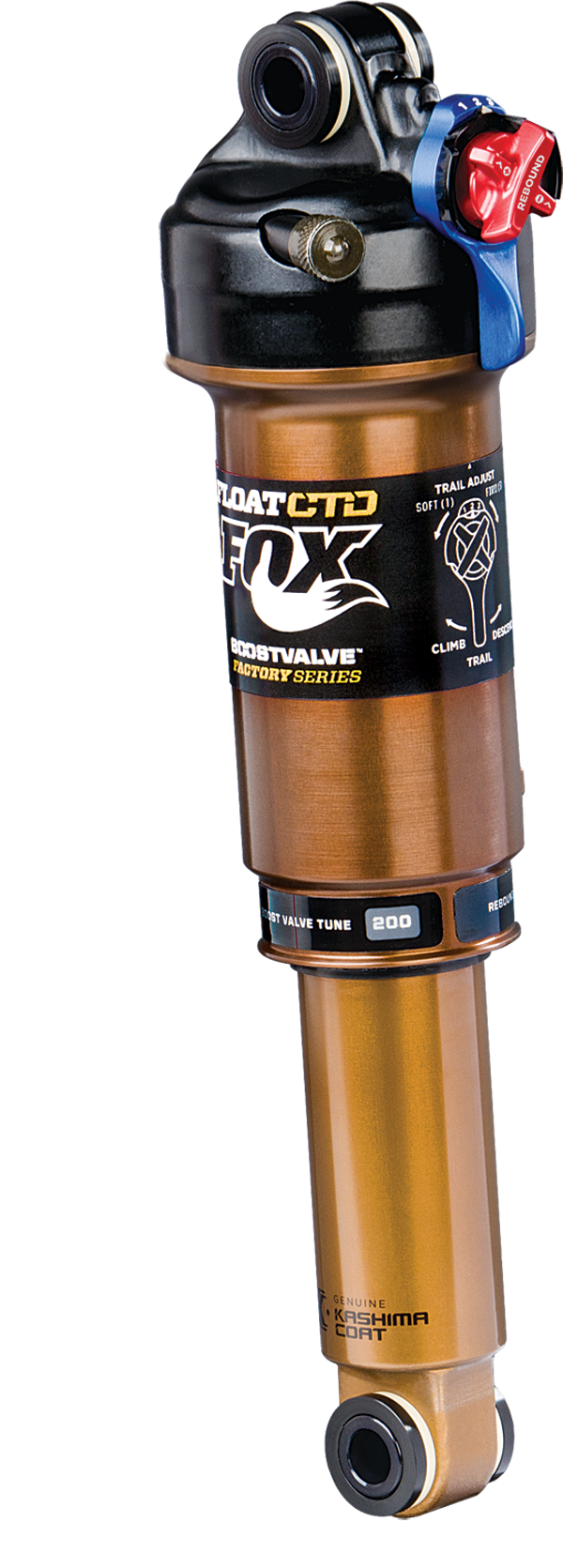2013 Fox Racing Shox
 The new range of Fox suspension sees some pretty major changes, and not just with the new CTD damper system.
The new range of Fox suspension sees some pretty major changes, and not just with the new CTD damper system.
Their 80/100mm travel 32-series 29er forks have lost around 200g, taking them down to 1,470g (the 26-inch version drops 50g and now weighs 1,350g). New mounting hardware on their rear shocks is said to reduce friction by nearly 50%. Chris Cocalis, founder of Pivot Cycles, feels that the new shock eye bushes have made a bigger difference to the shock feel than the earlier move to Kashima coat did. Fox says the new bushing design is be more durable too. There’s also a lighter and simpler version of their large volume air shock. For bikes that use the HV air can, it saves around 30g and is said to dissipate heat better than the previous multi-sleeve design.
The biggest news is undoubtedly the new three-mode CTD (Climb/Trail/Descend) damper system. It features at both ends of the bike, effectively tying the front and rear suspension together. ‘Climb’ is a firm platform that’s designed primarily for efficiency under hard pedalling, although it will still blow off if you hit something. ‘Trail’ engages a moderate level of low speed compression damping to limit dive and bob but still allows the suspension to perform for general trail riding. ‘Descend’ is soft and plush for maximum traction and control. The top-end ‘Factory’ level products will offer a three position ‘Trail Tune’ adjustment that lets you decide how firm or soft you’d like the middle setting to be. Fox also varies the CTD tune with the travel, and the shorter travel options get a stiffer tune on the ‘climb’ mode (although it’s still not a lockout).
Float First Impressions
In the last couple of weeks we’ve been riding a Factory level Float 32 CTD fork. Ours is the 150mm travel version, so it’s definitely got the softer, more active trail oriented damper tune. Even in the firmest climb setting the fork still moves for both bumps and rider inputs. The damping adds harshness and minimises bob compared to the other settings but remains pretty active overall.

Flip to the Trail mode and you’ve got a real suspension fork on your hands. It’s plush and has just enough low speed compression to reign in brake dive and make it nicer to pedal when out of the saddle. The three tuning options within the Factory level Trail mode produce comparatively small changes to the damping—there’s enough variation that fussy suspension tweakers will appreciate it but others mightn’t notice the difference.
Descend is very supple and buttery soft (think margarine that’s been left out of the fridge). Some may prefer tackling steep and techy trails in the Trail mode, as it’s more resistant to brake dive and body weight shifts. Descent is good for the fast and open stuff where you want to stay glued to the trail.
Overall I feel that similar settings could be achieved with the older RLC fork damper, but CTD is more user-friendly. The three modes are quick and easy to access on the trail with less chance of inadvertently bumping other settings. For those who think low speed damping is some form of garden sprinkler system, CTD is a real step in the right direction.
For me, the most startling improvement for 2013 is the new air piston that features in their longer travel forks. Previously the Float air spring would ramp up in a very progressive manner. Most riders could only utilise all the travel if the fork was set up really soft, and this would lead to lots of sag and mush in the early travel. In the past we’ve run technical articles on modifications that would make the forks more linear and able to use their travel (Nov/Dec/Jan 2007/08) but understandably, most people aren’t keen on attacking their expensive fork with a hacksaw.

The new ‘long travel air piston’ comes on all Float models from 130 to 180mm travel and features a bigger air chamber combined with a longer negative spring to provide initial suppleness. It makes a night and day difference to the suspension feel and the fork regularly uses all of the travel without having to flat land from a veritable cliff. Fox talks of providing a ‘coil-like’ feel and they are 100% right, this new air fork brought back strong memories of riding their Vanilla coil sprung fork—very nice!
If anything Fox could have made the spring rate too linear for the ‘huck-to-flat’ crowd. With the prescribed 25% sag I have bottomed the fork with some force on botched landings. At least the ramp-up can be adjusted by adding more Float Fluid oil to the air chamber; a very simple and easy way to create a more progressive spring curve.
So far the new Float fork looks really good but we’ll keep riding them and offer a full review in our next issue.
Sola Sports (02) 9550 1655 / www.foxracingshox.com





